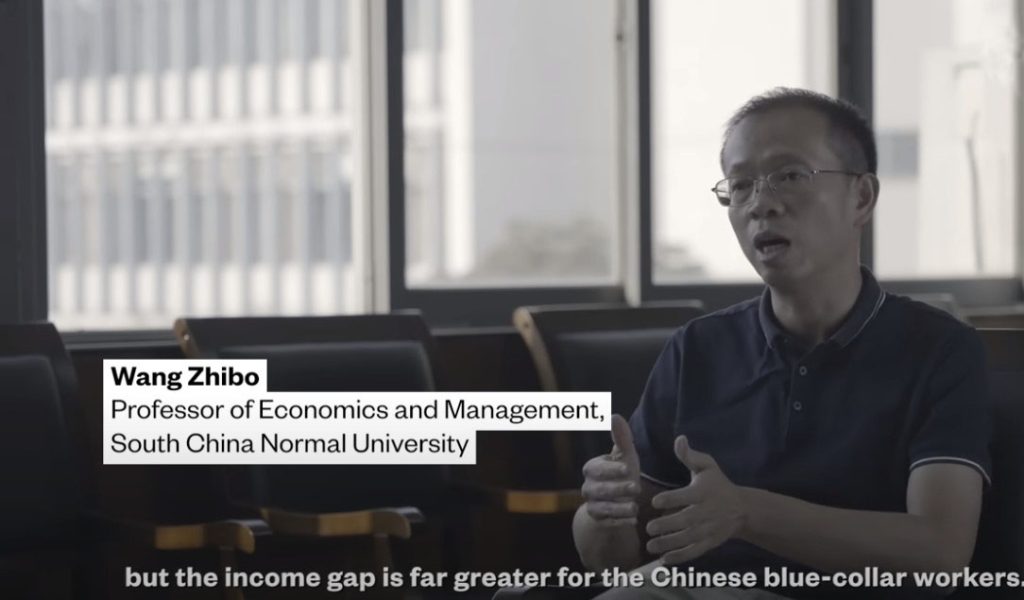Video translation is a powerful tool for companies, allowing them to expand their audience, increase international visibility, and improve communication with clients. This tool plays a significant role in business development, opening up new opportunities for growth and successful international operations.

 Translating video from Chinese to English may encounter differences in cultural contexts, language nuances, and technical aspects such as sound and image synchronization. It is also essential to consider content localization and adaptation to cultural specifics for the target audience.
Translating video from Chinese to English may encounter differences in cultural contexts, language nuances, and technical aspects such as sound and image synchronization. It is also essential to consider content localization and adaptation to cultural specifics for the target audience.
Why is video translation from Chinese to English in demand?
Video translation from Chinese to English is in demand due to the significant influence of the Chinese market on the global economy. With over 1.2 billion Chinese speakers, this market is one of the largest in the world. Video translation from Chinese to English is relevant for companies aiming to attract Chinese consumers and expand their influence in the global market. Additionally, Chinese media content such as video games, movies, and TV shows are becoming increasingly popular worldwide, and translating them into English helps to expand the audience and increase potential profits.Who is particularly interested in video translation from Chinese to English?
Video translation from Chinese to English is of interest to various companies engaged in trade, manufacturing, services, and marketing. This includes both large corporations and small to medium-sized enterprises operating in the Chinese market or seeking to enter it. Chinese bloggers, despite China's strict Internet policy, strive to reach beyond their country and attract English-speaking audiences. The translation of popular Chinese anime, enjoyed by children, teenagers, and adults worldwide, is especially in demand.
What types of videos can be translated from Chinese to English?
Videos suitable for translation from Chinese to English can be commercial or amateur. Examples include:- Educational content: China produces a lot of educational content, including video lessons, lectures, online courses, etc. Translating such content into English can be useful for English-speaking audiences interested in learning Chinese language, culture, history, or accessing up-to-date information about education in China.
- Media content: China produces many films, TV series, music videos, and other media content. Translating such videos into English helps to expand the audience beyond China and attract the attention of foreign viewers and fans of Chinese culture.
- Business-related content: Videos related to business activities, product presentations, advertising videos, and educational materials from Chinese companies and entrepreneurs can also be translated into English. This helps to expand the geographical reach of the customer base, attract new partners and investors, and improve communication with English-speaking clients and partners.
- Entertainment: This category includes various TV shows, movies, comics, series, and other TV content, which is often not readily available for free access on the Internet in English. It's worth mentioning that Chinese cinema has a history dating back over 120 years, making it more than 120 years old.
What is needed for video translation and how is it conducted?
To translate video from Chinese to English, several steps and tools are required:- Speech recognition: First, the speech recognition process is necessary to convert the audio content of the video into Chinese text. Specialized speech recognition software and technologies can be used for this purpose.
- Text translation: After the speech is converted into text, the text needs to be translated from Chinese to English. This can be done using machine translation or the services of professional translators.
- Subtitling or voice-over creation: The translated text can be visualized as subtitles, which will be displayed on the screen during the viewing of the video in English. Alternatively, a voice-over option is possible, where professional narrators read the translated text, and the audio track is added to the video.
- Editing and preparation for release: After the translation and creation of subtitles or voice-overs are completed, editing and mastering of the material are necessary to ensure its quality and compliance with the original. After this, the video is ready for publication on the target platform.
Challenges of translating video from Chinese to English
The most significant obstacle in video translation is the use of logographic, rather than alphabetic, writing. Before starting the translation process, it is necessary to recognize oral speech and convert it into text, which requires knowledge of the script of the source language. Chinese script differs significantly from Russian or English because it lacks an alphabet. Instead, Chinese employs thousands of characters, from which words and phrases are formed, akin to building blocks. For instance, the word "computer" consists of two characters: "electronic" and "brain." This is quite logical! Each character is pronounced as a syllable, and many characters sound the same, leading to a high level of homophony. Chinese also lacks the familiar division into words found in European languages, with text appearing as a continuous sequence of characters. Translating video from Chinese to English may encounter differences in cultural contexts, language nuances, and technical aspects such as sound and image synchronization. It is also essential to consider content localization and adaptation to cultural specifics for the target audience.
Translating video from Chinese to English may encounter differences in cultural contexts, language nuances, and technical aspects such as sound and image synchronization. It is also essential to consider content localization and adaptation to cultural specifics for the target audience.
Advantages of translating video from Chinese to English
By reaching audiences from other countries, everyone creating video content gains opportunities to expand their business and increase their revenue. This occurs in three stages:- Audience expansion: Video translation enables companies to reach new audiences, increase their reach, and attract the attention of international clients.
- Conversion rate increase: Multilingual videos contribute to higher conversion rates and the effectiveness of marketing campaigns by providing a broader audience reach.
- Communication enhancement: Video translation improves communication with customers, allowing them to better understand the products and services offered.
